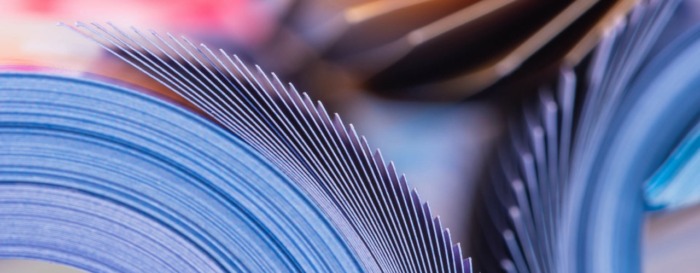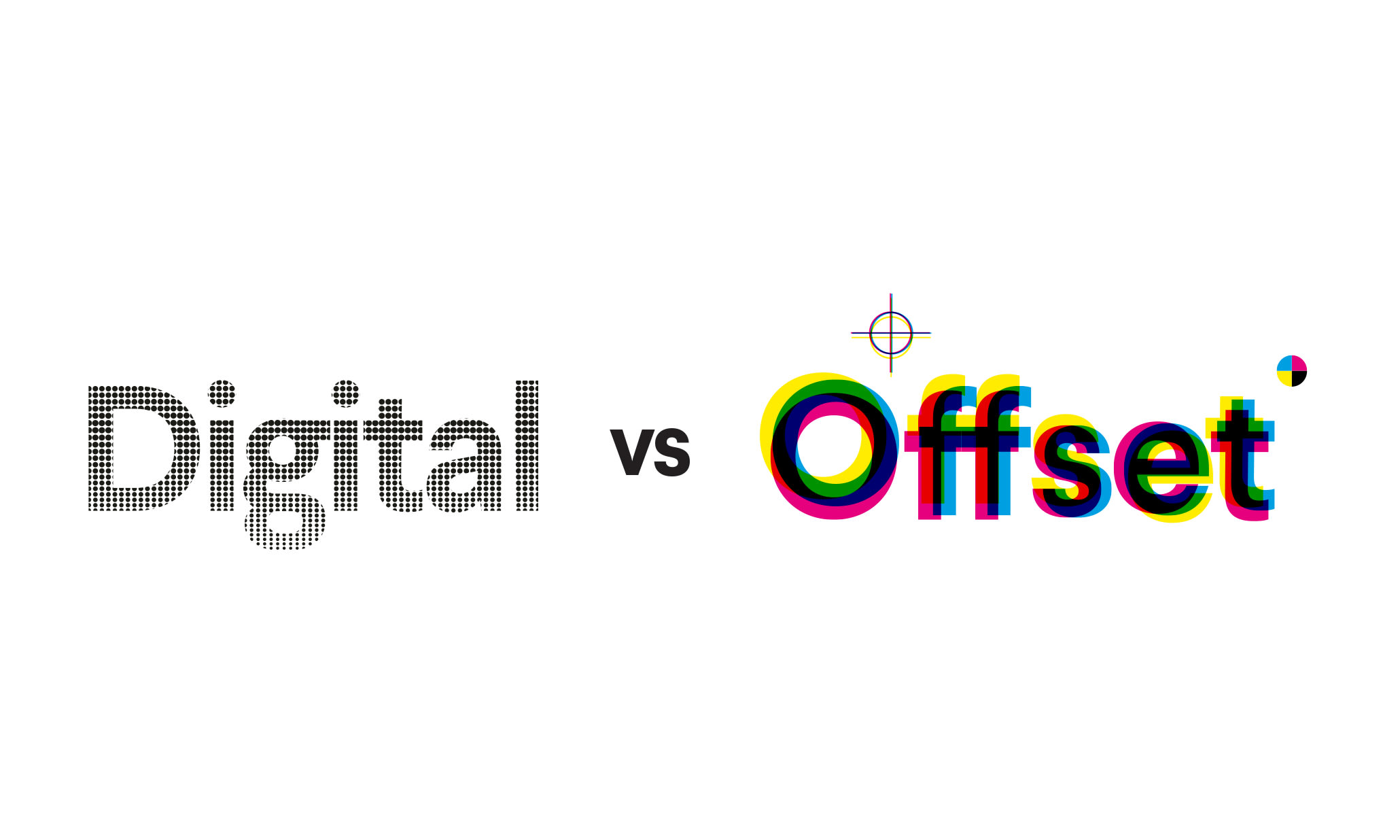Some Of 24??media
Some Of 24??media
Blog Article
Getting The 24??media To Work
Table of ContentsExcitement About 24??mediaThe Definitive Guide to 24??mediaAll about 24??mediaThe 45-Second Trick For 24??mediaGetting My 24??media To WorkThe 24??media PDFs
This is just feasible with Digital Printing, and it results in a new level of personalization. Litho Lamination (Offset Printing) is a conventional printing technique and was one of the most popular choice up until just recently. Litho is the procedure of printing onto a paper liner board, and then laminating that onto corrugated.Right here are a few of the most remarkable ones: Despite the fact that other printing types, like countered and display, can create great quality, electronic printing provides outstanding results. Unlike a few other methods, the top quality of a very first product coincides as the last. The digital printing procedure involves a straight transfer of the ink to the substratethat's why it's much quicker than various other printing alternatives.

Digital printing is very cost-efficient. When it comes to tailor-making a print job's final product, digital printing is rapid and adaptable.
The Definitive Guide to 24??media
That's why digital printing is a preferred approach for unstable printing jobs. Digital printing entails pushing a couple of buttons and obtaining an outcome within seconds. It does not require any unique skills or expertise to obtain the job donethe procedure is fully automated. Digital inkjet printing reduces the amount of waste due to the fact that it only sends out ink to the parts to be published.
While digital printing is very beneficial, various other methods are still being used. One of them is balanced out printing. Offset printing (or balanced out presses) is a conventional printing approach. It utilizes publishing plates, rubber blankets, and ink. Aluminium layers transfer a picture onto a rubber blanket, which subsequently rolls over a sheet of paper, leaving a print.

The smart Trick of 24??media That Nobody is Talking About
Display printing doesn't apply stress to the material. That's why it's commonly used for printing on delicate substratums like balloons or thin materials. Window Vinyl. A more lively, saturated, and intense finishBetter colour matching capabilitiesCost-efficient for big sets Made complex and time-consuming setupHigh expenses for low-volume printingOnly one layout per batchResolution of pictures is normally lower high quality
The printer sprays numerous tiny ink droplets externally to create the wanted picture. Today, business inkjet printer technology is changing traditional high-speed printing presses.: Laser printers use a laser to move the digital picture to the surface area. The laser returns and forth to create static power during the printing process, launching the warmed printer toner onto the surface area.
Laser printers are faster however often featured higher upfront expenditures. However, printer often tend to have a higher long-term ROI than inkjet printers. Digital printing is developing rapidly. Thanks to its speed, cost-efficiency, and quality, it's likely to render older printing modern technologies ineffective in the close to future. By taking complete advantage of electronic printing abilities, you can develop premium products and advertising products while maintaining the track record of a sophisticated firm.
When planning for your company's operational or marketing print material, it is vital to select the most efficient kind of printing approach. Elements that go right into making a decision the print procedure a job needs will certainly be described in this short article.
The Best Strategy To Use For 24??media
This printing process is mostly used for smaller jobs with a fast turnaround time. Offset printing is the process where the image is moved from a metal printing plate to a rubber covering, and after that to the paper to produce a high-quality, clear picture. Offset printing is made use of for larger tasks that require specific colour representation.
Although price quotes can vary based on a task's requirements, a helpful guide to choosing which printing process your job needs is to determine run length. If your task calls for much less than 1,000 duplicates, it might be best to print using digital presses. If the project calls for greater than 1,000 duplicates published, it may be much more cost-effective to utilize offset printing.
Digital printing has a low set up price and a high run-cost, indicating it is the best printing technique for shorter runs. The factor that electronic printing has a low set-up price is due to the fact that plates do not need to be made and samples do not have to be published. Nonetheless, the toner that digital presses use is pricey, which is the factor why it has a higher run-cost.
Countered presses are created jobs with long terms since they have a high set-up price and a reduced run-cost. The factor that offset printing has a high set-up cost is because the press needs huge metal plates to be made in order to move the picture. It has an intensive cleansing and maintenance procedure that needs to be done in between different tasks.
About 24??media

Instances of balanced out printing tasks produced at Printing Unlimited. Throughout the printing process electronic presses, like laser printers, use toner for the manufacturing of colour.
Factors of personalisation can include a message, photos or colours that connect to the client's passion. There is a broad range of substratums that can be used when printing electronically on a flatbed press. Point of sale stands. Using our digital printers, we are able to publish on virtually any substrate as much as 2 inches thick
Discover Phillip Akhzar's trip, the Owner and Chief Executive Officer of Arka, bringing 16 years of competence in product packaging and supply chain logistics. Review more on Arka. Screen printing an enduring standard print method, has actually weathered the advancing print landscape with time; this method involves transferring ink through a mesh display onto a surface area, generating vivid and durable prints.
Despite its values, display printing has constraints. One downside is the intricacy and expense of establishing preliminary screens. For small-scale projects, setup expenses can be relatively high, making it much less cost-effective than alternate methods. Replicating complex information positions a difficulty. While mastering bold designs, display printing might deal with fine details and detailed patterns, a factor to consider for jobs demanding high intricacy.
The Best Strategy To Use For 24??media
Quick Turn-around: Since electronic printing is relatively quicker contrasted to the traditional approaches, no time will certainly be taken up by screen prep work, for that reason, making it ideal for the completion of time-bound tasks that may need modifications at the last minute. Versatility in Materials: Making use of digital printing, one can publish on materials like paper, material, plastic, and several others.
Limited Color-Matching: With respect to shade, digital printing can not precisely replicate the shades used similar description to in standard screen printing. This restriction will certainly affect work calling for a perfect match with the shades used in the screen printing procedure. Long-Term Resilience: Having the capacity to publish in a manner that is both dynamic and in-depth, one could argue that the long-lasting sturdiness of these prints on certain materials can be doubtful, with several celebrations having chosen screen printing for its more robust, enduring outcome.
Report this page